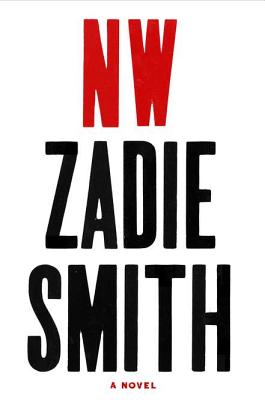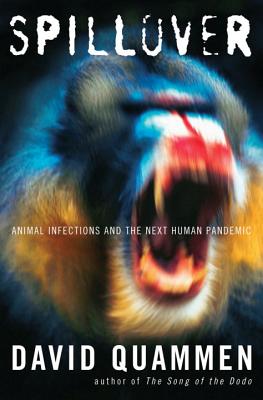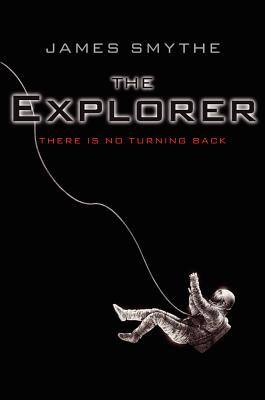“Himmlers Hirn heisst Heydrich”, or “Himmler’s brain is
called Heydrich”. The most dangerous man in Hitler’s cabinet, Reinhard
Heydrich was known as the “Butcher of Prague.” He was feared by all and
loathed by most. With his cold Aryan features and implacable cruelty,
Heydrich seemed indestructible—until two men, a Slovak and a Czech
recruited by the British secret service, killed him in broad daylight on
a bustling street in Prague, and thus changed the course of History.
Who
were these men, arguably two of the most discreet heroes of the
twentieth century? In Laurent Binet’s captivating debut novel, we follow
Jozef Gabćik and Jan Kubiš from their dramatic escape of Nazi-occupied
Czechoslovakia to England; from their recruitment to their harrowing
parachute drop into a war zone, from their stealth attack on Heydrich’s
car to their own brutal death in the basement of a Prague church.
A seemingly effortlessly blend of historical truth, personal memory, and Laurent Binet’s remarkable imagination,
is a work at once thrilling and intellectually
engrossing, a fast-paced novel of the Second World War that is also a
profound meditation on the nature of writing and the debt we owe to
history.
A ferocious firefight with Iraqi insurgents at "the battle of
Al-Ansakar Canal"—three minutes and forty-three seconds of intense
warfare caught on tape by an embedded Fox News crew—has transformed the
eight surviving men of Bravo Squad into America's most sought-after
heroes. For the past two weeks, the Bush administration has sent them on
a media-intensive nationwide
to reinvigorate
public support for the war. Now, on this chilly and rainy Thanksgiving,
the Bravos are guests of America's Team, the Dallas Cowboys, slated to
be part of the halftime show alongside the superstar pop group Destiny's
Child.
Among the Bravos is the Silver Star–winning hero of Al-Ansakar
Canal, Specialist William Lynn, a nineteen-year-old Texas native. Amid
clamoring patriots sporting flag pins on their lapels and Support Our
Troops bumper stickers on their cars, the Bravos are thrust into the
company of the Cowboys' hard-nosed businessman/owner and his coterie of
wealthy colleagues; a luscious born-again Cowboys cheerleader; a veteran
Hollywood producer; and supersized pro players eager for a vicarious
taste of war.
Among these faces Billy sees those of his family—his
worried sisters and broken father—and Shroom, the philosophical sergeant
who opened Billy's mind and died in his arms at Al-Ansakar.
Over the course of this day, Billy will begin to understand
difficult truths about himself, his country, his struggling family, and
his brothers-in-arms—soldiers both dead and alive. In the final few
hours before returning to Iraq, Billy will drink and brawl, yearn for
home and mourn those missing, face a heart-wrenching decision, and
discover pure love and a bitter wisdom far beyond his years.
is a devastating portrait of our time, a searing and powerful novel
that cements Ben Fountain's reputation as one of the finest writers of
his generation.
Pak Jun Do is the haunted son of a lost mother—a singer “stolen” to
Pyongyang—and an influential father who runs a work camp for orphans.
Superiors in the state soon recognize the boy’s loyalty and keen
instincts. Considering himself “a humble citizen of the greatest nation
in the world,” Jun Do rises in the ranks. He becomes a professional
kidnapper who must navigate the shifting rules, arbitrary violence, and
baffling demands of his Korean overlords in order to stay alive. Driven
to the absolute limit of what any human being could endure, he boldly
takes on the treacherous role of rival to Kim Jong Il in an attempt to
save the woman he loves, Sun Moon, a legendary actress “so pure, she
didn’t know what starving people looked like.”
In this epic, critically acclaimed tour de force, Adam Johnson
provides a riveting portrait of a world rife with hunger, corruption,
and casual cruelty but also camaraderie, stolen moments of beauty, and
love.
Pulitzer Prize finalist Lydia Millet is
"one of the most acclaimed novelists of her generation" (Scott Timberg,
Los Angeles Times). Salon praised her for writing that is "always
flawlessly beautiful, reaching for an experience that precedes language
itself." The Village Voice added, "If Kurt Vonnegut were still alive, he
would be extremely jealous."
This stunning new novel presents
Susan Lindley, a woman adrift after her husband's death and the
dissolution of her family. Embarking on a new phase in her life after
inheriting her uncle's sprawling mansion and its vast collection of
taxidermy, Susan decides to restore the neglected, moth-eaten animal
mounts, tending to "the fur and feathers, the beaks, the bones and
shimmering tails." Meanwhile an equally derelict human
menagerie--including an unfaithful husband and a chorus of eccentric old
women--joins her in residence.
In a setting both wondrous and
absurd, Susan defends her legacy from freeloading relatives and explores
the mansion's unknown spaces. Funny and heartbreaking, Magnificence
explores evolution and extinction, children and parenthood, loss and
revelation. The result is the rapturous final act to the critically
acclaimed cycle of novels that began with
How the Dead Dream.
This is the story of a city.
The northwest corner of a city. Here you’ll find guests and hosts,
those with power and those without it, people who live somewhere
special and others who live nowhere at all. And many people in between.
Every city is like this. Cheek-by-jowl living. Separate worlds.
And then there are the visitations: the rare times a stranger
crosses a threshold without permission or warning, causing a disruption
in the whole system. Like the April afternoon a woman came to Leah
Hanwell’s door, seeking help, disturbing the peace, forcing Leah out of
her isolation…
Zadie Smith’s brilliant tragi-comic new novel follows four
Londoners - Leah, Natalie, Felix and Nathan – as they try to make adult
lives outside of Caldwell, the council estate of their childhood. From
private houses to public parks, at work and at play, their London is a
complicated place, as beautiful as it is brutal, where the thoroughfares
hide the back alleys and taking the high road can sometimes lead you to
a dead end.
Depicting the modern urban zone – familiar to town-dwellers everywhere – Zadie Smith’s
NW is a quietly devastating novel of encounters, mercurial and vital, like the city itself.
NONFICTION:
In this brilliantly written, fast-paced book, based on three years of
uncompromising reporting, a bewildering age of global change and
inequality is made human.
Annawadi is a makeshift settlement
in the shadow of luxury hotels near the Mumbai airport, and as India
starts to prosper, Annawadians are electric with hope. Abdul, a
reflective and enterprising Muslim teenager, sees “a fortune beyond
counting” in the recyclable garbage that richer people throw away. Asha,
a woman of formidable wit and deep scars from a childhood in rural
poverty, has identified an alternate route to the middle class:
political corruption. With a little luck, her sensitive, beautiful
daughter—Annawadi’s “most-everything girl”—will soon become its first
female college graduate. And even the poorest Annawadians, like Kalu, a
fifteen-year-old scrap-metal thief, believe themselves inching closer to
the good lives and good times they call “the full enjoy.”
But then Abdul the garbage sorter is falsely accused in a shocking
tragedy; terror and a global recession rock the city; and suppressed
tensions over religion, caste, sex, power and economic envy turn brutal.
As the tenderest individual hopes intersect with the greatest global
truths, the true contours of a competitive age are revealed. And so, too, are the imaginations and courage of the people of Annawadi.
With intelligence, humor, and deep insight into what connects human beings to one another in an era of tumultuous change,
Behind the Beautiful Forevers carries
the reader headlong into one of the twenty-first century’s hidden
worlds, and into the lives of people impossible to forget.

In
Private Empire Steve Coll investigates the largest and
most powerful private corporation in the United States, revealing the
true extent of its power. ExxonMobil’s annual revenues are larger than
the economic activity in the great majority of countries. In many of the
countries where it conducts business, ExxonMobil’s sway over politics
and security is greater than that of the United States embassy. In
Washington, ExxonMobil spends more money lobbying Congress and the White
House than almost any other corporation. Yet despite its outsized
influence, it is a black box.
Private Empire pulls back the curtain, tracking the corporation’s recent history and its central role on the world stage, beginning with the
Exxon Valdez accident in 1989 and leading to the
Deepwater Horizon
oil spill in the Gulf of Mexico in 2010. The action spans the globe,
moving from Moscow, to impoverished African capitals, Indonesia, and
elsewhere in heart-stopping scenes that feature kidnapping cases, civil
wars, and high-stakes struggles at the Kremlin. At home, Coll goes
inside ExxonMobil’s K Street office and corporation headquarters in
Irving, Texas, where top executives in the “God Pod” (as employees call
it) oversee an extraordinary corporate culture of discipline and
secrecy.
The narrative is driven by larger than life characters, including
corporate legend Lee “Iron Ass” Raymond, ExxonMobil’s chief executive
until 2005. A close friend of Dick Cheney’s, Raymond was both the most
successful and effective oil executive of his era and an unabashed
skeptic about climate change and government regulation.. This position
proved difficult to maintain in the face of new science and political
change and Raymond’s successor, current ExxonMobil chief executive Rex
Tillerson, broke with Raymond’s programs in an effort to reset
ExxonMobil’s public image. The larger cast includes countless world
leaders, plutocrats, dictators, guerrillas, and corporate scientists who
are part of ExxonMobil’s colossal story.
The first hard-hitting examination of ExxonMobil,
Private Empire is
the masterful result of Coll’s indefatigable reporting. He draws here
on more than four hundred interviews; field reporting from the halls of
Congress to the oil-laden swamps of the Niger Delta; more than one
thousand pages of previously classified U.S. documents obtained under
the Freedom of Information Act; heretofore unexamined court records; and
many other sources. A penetrating, newsbreaking study,
Private Empire is a defining portrait of ExxonMobil and the place of Big Oil in American politics and foreign policy.
In this astonishing and profound work, an irreverent sleuth traces
the riddle of existence from the ancient world to modern times.
Whether framed
philosophically as “Why is there a world rather than nothing at all?” or more
colloquially as “But, Mommy, who made God?” the metaphysical mystery about how
we came into existence remains the most fractious and fascinating question of
all time.
Following in the footsteps of Christopher Hitchens, Roger Penrose,
and even Stephen Hawking, Jim Holt emerges with an engrossing narrative that
traces our latest efforts to grasp the origins of the universe. As he takes on
the role of cosmological detective, the brilliant yet slyly humorous Holt
contends that we might have been too narrow in limiting our suspects to God vs.
the Big Bang. Whether interviewing a cranky Oxford philosopher, a Physics Nobel
Laureate, or a French Buddhist monk, Holt pursues unexplored and often bizarre
angles to this cosmic puzzle. The result is a brilliant synthesis of cosmology,
mathematics, and physics—one that propels his own work to the level of
philosophy itself.
A masterpiece of science reporting that tracks the animal origins of emerging human diseases.
The emergence of strange new diseases is a frightening problem that
seems to be getting worse. In this age of speedy travel, it threatens a
worldwide pandemic. We hear news reports of Ebola, SARS, AIDS, and
something called Hendra killing horses and people in Australia—but those
reports miss the big truth that such phenomena are part of a single
pattern. The bugs that transmit these diseases share one thing: they
originate in wild animals and pass to humans by a process called
spillover.
David Quammen tracks this subject around the world. He recounts
adventures in the field—netting bats in China, trapping monkeys in
Bangladesh, stalking gorillas in the Congo—with the world’s leading
disease scientists. In
Spillover Quammen takes the reader along on this astonishing quest to learn
how,
where from, and
why these diseases emerge, and he asks the terrifying question: What might the next big one be?
 The ultimate fish-out-of-water tale . . . A child who never quite fit
in, Rebecca Dana worshiped at the altar of Truman Capote and Nora
Ephron, dreaming of one day ditching Pittsburgh and moving to New York,
her Jerusalem. After graduating from college, she made her way to the
city to begin her destiny. For a time, life turned out exactly as she’d
planned: glamorous parties; beautiful people; the perfect job,
apartment, and man. But when it all came crashing down, she found
herself catapulted into another world. She moves into Brooklyn’s
enormous Lubavitch community, and lives with Cosmo, a thirty-year-old
Russian rabbi who practices jujitsu on the side.While Cosmo,
disenchanted with Orthodoxy, flirts with leaving the community, Rebecca
faces the fact that her religion—the books, magazines, TV shows, and
movies that made New York seem like salvation—has also failed her. As
she shuttles between the world of religious extremism and the world of
secular excess, Rebecca goes on a search for meaning. Trenchantly
observant, entertaining as hell, a mix of Shalom Auslander and The Odd Couple, Jujitsu Rabbi and the Godless Blonde is a thought-provoking coming-of-age story for the twenty-first century.
The ultimate fish-out-of-water tale . . . A child who never quite fit
in, Rebecca Dana worshiped at the altar of Truman Capote and Nora
Ephron, dreaming of one day ditching Pittsburgh and moving to New York,
her Jerusalem. After graduating from college, she made her way to the
city to begin her destiny. For a time, life turned out exactly as she’d
planned: glamorous parties; beautiful people; the perfect job,
apartment, and man. But when it all came crashing down, she found
herself catapulted into another world. She moves into Brooklyn’s
enormous Lubavitch community, and lives with Cosmo, a thirty-year-old
Russian rabbi who practices jujitsu on the side.While Cosmo,
disenchanted with Orthodoxy, flirts with leaving the community, Rebecca
faces the fact that her religion—the books, magazines, TV shows, and
movies that made New York seem like salvation—has also failed her. As
she shuttles between the world of religious extremism and the world of
secular excess, Rebecca goes on a search for meaning. Trenchantly
observant, entertaining as hell, a mix of Shalom Auslander and The Odd Couple, Jujitsu Rabbi and the Godless Blonde is a thought-provoking coming-of-age story for the twenty-first century.














































